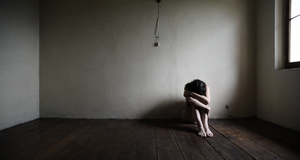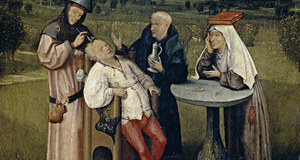Featured Article:The Evolution and Devolution of Mental Health Services in Australia
By
2017, Vol. 9 No. 10 | pg. 1/2 | »
IN THIS ARTICLE
KEYWORDS
AbstractThis article provides a brief historical overview of the development of mental health services in Australia. It commences with the establishment of the first public asylum, Bethlem Royal Hospital, London, in 1247, the arrival of the First Fleet on 24 January 1788 at Botany Bay, New South Wales and the establishment and growth of asylums in Australia. The article identifies some of the major social, historical, medical and political developments that have influenced our understanding and treatment of mental illness and the mentally ill. The article then traces the evolution and development of the five major professions currently represented in public sector mental health services; nursing, occupational therapy, psychiatry, psychology and social work. While there are other allied health disciplines employed in public sector mental health services including art therapists, music therapists, speech therapists, dietitians and exercise physiologists it is occupational therapists, psychologists and social workers who are represented in larger numbers. Tracing the evolution of these five professional groups sheds light on the current concerns within public sector mental health services regarding blurring of boundaries between the professional groups, defining the scope of practice of each professional group and creeping genericism. IntroductionThe history of mental illness and treatment of the mentally ill in Australia evolved within a custodial framework (Barnes & Bowl 2001). A custodial framework is defined by acts of detention and deprivation of liberty in order to punish the aberrant in society (Barnes & Bowl 2001). Under this framework, mental illness was managed by imprisoning the mentally ill behind asylum walls in order to reduce the risk posed to the wider community. Doing so disempowered these individuals and punished them for being ill (Barnes & Bowl 2001). The language of mental illness was pejorative (Gilman 1988). Those with mental illness were referred to as lunatics and inmates (Evans 1966). Their keepers were wardens (Gilman 1988). Bethlem Royal Hospital (otherwise known as Bedlam), the first recorded public mental asylum, was founded in London in 1247 (Shorter 1997). Following the opening of Bedlam Hospital, many more asylums were established throughout Europe and their intake was primarily drawn from the poor and destitute. The goal of these asylums was twofold; to isolate those individuals who caused trouble and could not be safely managed at home as well as to provide care for them (Digby 1985). Despite these noble intentions, however, asylums were places of cruel conditions, where inmates starved, were chained to posts and left in their own vomit, urine and excreta (Bostock 1968). Treatment was either non-existent or barbaric. Once institutionalised inmates had little hope of being released (Evans 1966). The asylum walls were meant to keep them in, and the rest of society out. Wealthy families tried to manage insane individuals at home (Parry-Jones 2013). They would confine the person to a locked wing or room of the estate as depicted in the novel, Wuthering Heights (Bronte 1847). Those familiar with the story will recall that Mr Rochester had sequestered his mentally ill wife in a locked wing of the estate with a servant assigned to keep her in order. In England, by the middle of the eighteenth century wealthy families with an insane individual they could not manage at home would confine them to private houses under the supervision of a doctor or a clergyman (Parry Jones 1972). The mentally ill at this time were feared and viewed as evil or possessed (Evans 1966). The doctors who treated the mentally ill were referred to as “alienists” and did not treat other types of patients (Parry Jones 1972). These doctors later played a critical role in the establishment of asylums, which ironically “alienated” those with mental illness from society (Parry Jones 1972). Up until the early nineteenth century, mental illness was not considered a medical disorder. It was referred to as lunacy (Scull 1993; Shorter 1997). Very few were interested in the plight of the mentally ill (Parry Jones 1972). Treatment consisted of chains, shackles and other forms of physical restraint (Parry Jones 1972). It was not until the nineteenth century that the medical fraternity became interested in mental illness and began to conceptualise it as a medical condition amenable to treatment (Scull 1979). This shift in thinking heralded a growing interest in the mentally ill and paved the way for the development and contribution of different professions in treating mental illness. The Development of Mental Health Services in AustraliaMany of the 750 convicts who arrived on the First Fleet in 1788 were mentally ill (Parkinson 1981). The new settlement was governed as a military autocracy, whereby “the Governor’s authority was virtually absolute and it was the legal foundation on which lunacy administration rested” (Lewis 1988, p. 4). The penal nature of the colony, steeped in a military and custodial regime influenced the model of care for these people (Bostock 1968). There was no distinction made between criminals, those with intellectual disability or mental illness (Bostock 1968). Anyone who was deemed a risk to society was imprisoned (Coleborne 2003). Initially those designated criminals, idiots or lunatics were bundled together in the Town Gaol at Parramatta. They were held to be a nuisance and menace to the community at large (Bostock 1968). By 1811 a mental asylum was established at Castle Hill, New South Wales and an attempt was made to separate those who were criminal from those who were mentally ill (Coleborne & MacKinnon 2006). Untrained male attendants hired for their physical size and strength staffed it (Parkinson 1981). In 1838, Tarban Creek Asylum, Sydney (later Gladesville Hospital) became the first purpose built psychiatric facility in Australia (Moncrieff & Crawford 2001). Inmates were drawn from both the Sydney and Melbourne settlements (Bostock 1968). The first superintendent appointed had gained experience at St Luke’s Hospital for the mentally ill in England. His role was twofold, the maintenance of discipline, restraint and order as well as financial oversight. Yet this was patently insufficient and a growing awareness of the need for medical involvement in the treatment of the mentally ill began to form (Bostock 1968). A further 12 asylums were established in New South Wales during the 1800s housing up to 2000 inmates. In1843 the Lunacy Act was introduced in Victoria. This piece of legislation heralded a shift in the conceptualisation of mental illness, an awareness of the need for medical treatment and the acceptance of responsibility by governments for care of the mentally ill (Silove 2002). There was also growing recognition of the abuses being perpetrated against the mentally ill. Because of this recognition, in 1852 a government enquiry was formed to investigate reports of violence, corruption and general mismanagement of mental asylums. A direct result of the enquiry was that doctors (Lewis 1988) slowly replaced lay superintendents as administrators of the asylums. This marked the beginning of the moral treatment era and humane conditions for inmates (Brothers 1962). The medical approach introduced notions of treatment and rehabilitation and moved away from a purely custodial framework (Silove 2002). However, the single most important development in the treatment of mental illness was the discovery of chlorpromazine in 1951, otherwise known by its trade name, Largactil, an antipsychotic medication that revolutionised the treatment of schizophrenia (Ban 2006). Like most innovations, the discovery of chlorpromazine as a treatment for schizophrenia was serendipitous and resulted from researchers in France trying to find a cure for malaria. Instead, they found this newly synthesised drug had a sedating effect on patients. Chlorpromazine secured FDA approval in 1954 as the first psychiatric medication and provided a breakthrough in the treatment of mental illness. The pharmacological management of schizophrenia, enabled patients to embark on programs of rehabilitation that included therapeutic, vocational and recreational activities (Ban 2006). Psychiatric institutions developed work schemes consisting of farming activities such as gardening, growing vegetables and tending to livestock (Brothers 1962). Male patients were encouraged to contribute to outdoor and more physical activities such as brickwork, woodwork, and farming. Female patients were engaged in food preparation in the kitchens, in the laundry and sewing rooms. These activities were seen as innovative, adaptive and a means for all inmates to make a positive contribution to the upkeep of the asylum (Brothers 1962). Rapid change occurred following the Second World War, economically, politically and socially (Brothers 1962). The era between 1950 and 1970 introduced mepbromate in 1955 (otherwise known as happy pills), tricyclic antidepressants in the late 1950s, the first of the benzodiazepines in 1960, the first popular MAOI (monoamine oxidase inhibitor) in 1961, diazepam (Valium) in 1963, haloperidol in 1967 and cognitive therapy in the 1960s (Clark 1997). These developments, among others, cemented the role of psychiatry in the care and treatment of mental illness. The ability to stabilise and manage the symptoms of psychosis and mood disorders, offered those with mental illness hope of discharge from the asylums (Coleborne & MacKinnon 2006). A seminal paper, The Richmond Report, published in 1981 argued for the deinstitutionalisation of people with mental illness and uncovered the various abuses perpetrated against those individuals being held in institutions. It was identified with D.T. Richmond who was Chairperson of the NSW Inquiry into Health Services for the Psychiatrically Ill and Developmentally Disabled and who championed the rights of the mentally ill to live in the community. Following publication of the Richmond Report (1981) deinstitutionalisation in Australia commenced in 1992 but it was inadequately funded and poorly orchestrated (Bircanin & Short 1995). Reports of mentally ill people living on the streets, unmedicated, hungry and dying prompted two inquiries by the Australian Health Ministers Advisory Council (AHMAC) Task Force convened in 1991 and the National Inquiry into the Human Rights of People with Mental Illness by the then Human Rights and Equal Opportunity Commissioner, Brian Burdekin, The Burdekin Report (1993). Both of these enquiries addressed justice, sociological, economic and epidemiological issues. Following these inquiries, the preferred model of treatment for those with mental illness moved towards community care with brief hospitalisations in acute inpatient units (AIHW 2013). Managing those with mental illness in the community called for new models of care that introduced generic care co-ordinator positions staffed by nurses, occupational therapists, psychologists and social workers. This in turn has resulted in extended scopes of practice and blurred boundaries between these professional groups (Corney 1999). Where once, mental health nurses did everything, today these activities are shared by the professional groups in mental health services. Mental Health NursingThe historical development of mental nursing in Australia occurred somewhat separately to other branches of nursing (Happell 2007). This stems largely from the fact that madness was historically perceived to be the result of bad blood, demonic possession, or weakness of character rather than disease or illness (Singh et al. 2001). The emphasis of mental health care was custodial rather than therapeutic because there were no known effective treatments for mental illness until the pharmacological discovery of chlorpromazine and other antipsychotic agents in the 1950s (Happell 2007). Untrained male attendants delivered care in the mental asylums during the 1900s. Often, those recruited to these positions were held to be of similar social rank to the inmates and were called, “lunatic attendant,” “keeper” and “warden” (Goodwin & Happell 2007, p. 56). Training for attendants started slowly in the 19th Century but did not commence in earnest until the 20th Century. Medical staff delivered the initial training to the attendants by way of lectures. With formal training mental health nursing began to attain some credibility and worth as a distinct branch of nursing (Goodwin & Happell 2007). Patients were segregated into male and female wards and this paved the way for employing female attendants (Keane 1987) necessary to protect the female inmates from the sexual abuses they were subject to from both the male patients and the male attendants (Gilman 1988). These female attendants initially began to provide nursing care and later occupational and recreational activities for the patients (Bessant 1999) with the latter now provided by occupational therapists. Major tranquillizers were introduced in the 1950s (Ban 2006). These medications as well as the antipsychotics that were developed provided psychiatrists and psychiatric nurses opportunity to dispense with managing mental illness through physical restraint. Anti-psychotic medications made it possible to offer pharmacological, psychological, occupational and recreational treatment and interventions (Barnes & Bowl 2001). Psychiatric nurses were able to establish therapeutic relationships with patients and thereby offer individual and group therapies. They led the way in introducing these innovative new types of therapies, only to have ownership wrested from them by, occupational therapy, psychiatry, psychology and social work (Cade 1979). The 1970s and 1980s marked two major changes to mental health nursing. The first change followed the scaling down and closure of large psychiatric institutions because of enquiries into institutional abuse. Community-based care and smaller inpatient units located within general hospitals replaced stand-alone psychiatric hospitals (Bessant 1999). Deinstitutionalisation moved mental health nursing from predominantly an inpatient setting to the community. The knowledge base required for mental health nursing expanded enormously, borrowing from developments in occupational therapy, psychology and social work and this was reflected in new models of training for psychiatric nurses and new models of community care (Happell 2009). The second major change in 1984 was that the tertiary sector took over responsibility for nursing education and training. Mental health nursing had historically been treated as a separate branch of nursing and those trained in this area (under the old style hospital training system) were unable to practice as general nurses (Farrell & Carr 1996). University training meant that all nurses underwent generalist training over four years followed by specialist mental health training (Happell 1998; Stevens & Crouch 1992). These developments not only added legitimacy to psychiatric nursing but also contributed to the blurring of boundaries between the different professional groups working in mental health. PsychiatryMost attempts to trace the development of psychiatry as a medical specialty focus discourse on the development of psychiatry in Europe but the roots of psychiatry can be traced as far back as 1550 BCE and the Ebers Papyrus which makes reference to clinical depression (Cade 1979). However, for the most part treatment of the mentally ill amounted to little more than confinement in an asylum (Scull 1979). In 1672 the anatomical treatise, De Anima Brutorum, written by English physician Thomas Willis was published. The significance of this text was that it described psychology in terms of brain function. In 1724, Cotton Mather, an influential New England Puritan minister began to promote physical explanations of mental illness over demonic possession. A few years later English physician, William Battie published, Treatise on Madness calling for an end to the brutal treatment of inmates in asylums (Ibell 2004). Battie advocated for treatment of the mentally ill and for recognition of psychiatry as a respectable profession. Similarly, in 1793, French physician Philippe Pinel ordered that chains be removed from mental patients at the Biçetre Hospital, Paris and in 1809 published the first description of dementia praecox, now known as schizophrenia. Other physicians followed Pinel’s lead and advocated for a moral treatment of the mentally ill. In 1808, Johann Christian Reil, a German physician coined the termed psychiatry (Dax 1989; Digby 1985). These developments heralded a growing recognition of mental illness as a medical condition, psychiatry as a medical specialty and the beginning of the moral treatment era (Scull 1979). Yet despite these developments in the conceptualisation of mental illness, treatment was still confined to removal of these individuals from society (Scull 1979) and continued to be physical and experimental in nature (Cade 1979). For example, in 1890 Burkhardt performed the first frontal lobe lobotomy. Lobotomies involve surgery to the cortical structures in the brain and used to manage highly agitated patients. Lobotomies and ECT (electroconvulsive therapy) treatments gained widespread use in the 1940s and 1950s (following the Second World War in which these techniques were perfected by German psychiatrists on prisoners in the concentration camps). These early lobotomies resulted in death or severe, permanent cognitive disability. The USSR and other countries banned the use of lobotomies in 1950 but they continued to be performed in the UK and USA until the mid-1980s (Coleborne & MacKinnon 2006). Continued experimentation on the mentally ill led to the discovery in 1903 of barbital (Veronal), the first barbiturate to find clinical use and in 1948, Melbourne psychiatrist, John Cade, accidently discovered that lithium carbonate could be used in the treatment of bipolar disorder (Ban 2006). However, the critical turning point for psychiatry and the treatment of mental illness occurred in the 1950s with the discovery of chlorpromazine (Largactil) (Bostock 1968). Chlorpromazine revolutionised the treatment of schizophrenia and with the development of the neuroleptic and anti-psychotic medications, psychiatry began to gain legitimacy as a specialty of medicine and cemented its position in the treatment of mental illness (Bostock 1968; Cade 1979). This pharmacological breakthrough in the treatment of schizophrenia opened up the possibility of discharging inpatients into community based care (Cade 1979; Gilman 1988; Parry Jones 1972). Alongside developments in pharmacological treatment was the evolution of talking therapies or psychotherapies (Henderson 2000). The dominant aetiological model of mental illness prior to the 1930s was psychobiological. Yet the post war period favoured a psychoanalytic model where psychopathology was understood as arising from a failure to successfully negotiate innate developmental stages, resulting in fixation in, or regression to, earlier developmental stages (Gilman 1988). This encouraged the development of several models of psychotherapy including psychoanalysis (1920s), behavioural therapies (1920s), client-centred therapy (1950s), cognitive therapy (1960s), primal therapy (1960s) and cognitive-behavioural therapy (1980s & 1990s) among many others (Cooksey & Brown 1998). Biological models of psychopathology experienced resurgence in the 1970s (Gilman 1988). Abbott (1988) associates this with attempts by psychiatry to retain jurisdiction over mental health in the face of competition from other professions (such as psychiatric nursing, occupational therapy, psychology and social work, all offering psychotherapy) by realigning itself with medicine. The redefinition of mental illness as a biological condition not only allowed for the reassertion of medical dominance over allied health professions, but also solidified governmental support for psychiatry as a scientific profession (Cooksey & Brown 1998). The development of anti-depressant, anxiolytic and anti-psychotic drugs cemented the role of psychiatrists as the experts in the treatment of mental illness (Cooksey & Brown 1998). Occupational TherapyOccupational therapy began to achieve formal recognition as a discipline in the 1940s (Pardy 1937). The birth and development of the profession owes a great deal to the work of auxiliaries. Auxiliaries were groups of volunteers who visited mental asylums from 1878 onwards offering the inmates support and comfort and raising funds for the running of the institutions (Dax 1992). These auxiliaries later formed into associations that advocated improved services, flexed their political muscle and eventually evolved into community support services (Dax 1989). The auxiliaries supported a more humane and holistic approach in the treatment of the mentally ill. They argued that patients being “treated for disordered and broken minds instead of disordered hearts and lungs, and broken bones were responsive to concerts, motor drives, visitors and the facilities for craft work” (Pardy 1937, p. 28). Nursing and artisan staff (Bircanin & Short 1995) introduced the first occupational therapy activities in psychiatric facilities. The development of occupational therapy as a health discipline can be traced back to a group of professionals in the USA who established the National Society for the Promotion of Occupational Therapy (NSPOT) in 1917 (Schwartz 2003, p. 5). Membership of this group included teachers, nurses, architects and physicians and was drawn from a wide range of professions. They advocated for a new profession in which the treatment of those with mental illness would not only be humane but would include activities, which they argued, would have therapeutic benefit (Schwartz 2003). George Barton, a founding member of NSPOT is credited with first using the term, occupational therapy (Christensen 1991). Based on his own personal history with tuberculosis, he believed that activities were as critical to treatment as medication and could be prescribed in a similar manner. In 1922, the first instructress in occupational therapy was employed at Gartnavel Royal Hospital in Scotland (Adamson 2011). She had completed a university course but did not have any formal training in occupational therapy. Her primary duties were to provide various craft activities for the patients physically unable to participate in any work such as gardening, farming, sewing, food preparation or laundry. During the 1930s, increasing numbers of craft instructresses were employed in British hospitals and The Maudsley Hospital commenced training nurses in the use of occupation. In 1937, formal occupational therapy training commenced with the establishment of schools in London and Edinburgh (Adamson 2011). Psychiatrists working in the Australian mental asylums who had returned from Great Britain began to prescribe occupational activities in their treatment of the mentally ill (Adamson 2011). The popularity of this approach grew and by the early 1940s, there were three overseas trained occupational therapists working in Australia (Anderson, & Bell, 1988a). The early work of the occupational therapists primarily focused on recreational activities such as handcrafts, concerts and outings. The New South Wales Hospital Commission initiated the first occupational therapy course in Australia in 1939 just after World War II commenced. Physicians and other medical staff began the course through the University of Sydney in response to the war emergency needs. Greater numbers of occupational therapists were employed by psychiatric hospitals in the 1950s and 1960s in response to a growing move away from institutionalisation to one of rehabilitation of the mentally ill. Assisting this change were the physical and psychological demands of soldiers returning from the wars. By the 1950s, occupational therapy had established itself as a profession within psychiatric hospitals and in the treatment of those with mental illness. The stage was now set for an expansion in practice. Deinstitutionalisation in the 1980s and 1990s posed challenges for the profession as patients were discharged into the community. The scope of practice changed from inpatient work (consisting of craft, outdoor and domestic activities) to focus on vocational and educational activities, links with social and community groups and establishing community rehabilitation programs (Silove 2002). Occupational therapists began to expand their scope of practice, taking on activities traditionally performed by nursing, psychology and social work staff leading to extended scopes of practice and a blurring of boundaries between these professional groups.Continued on Next Page » Suggested Reading from Inquiries Journal
Inquiries Journal provides undergraduate and graduate students around the world a platform for the wide dissemination of academic work over a range of core disciplines. Representing the work of students from hundreds of institutions around the globe, Inquiries Journal's large database of academic articles is completely free. Learn more | Blog | Submit Latest in History |


















